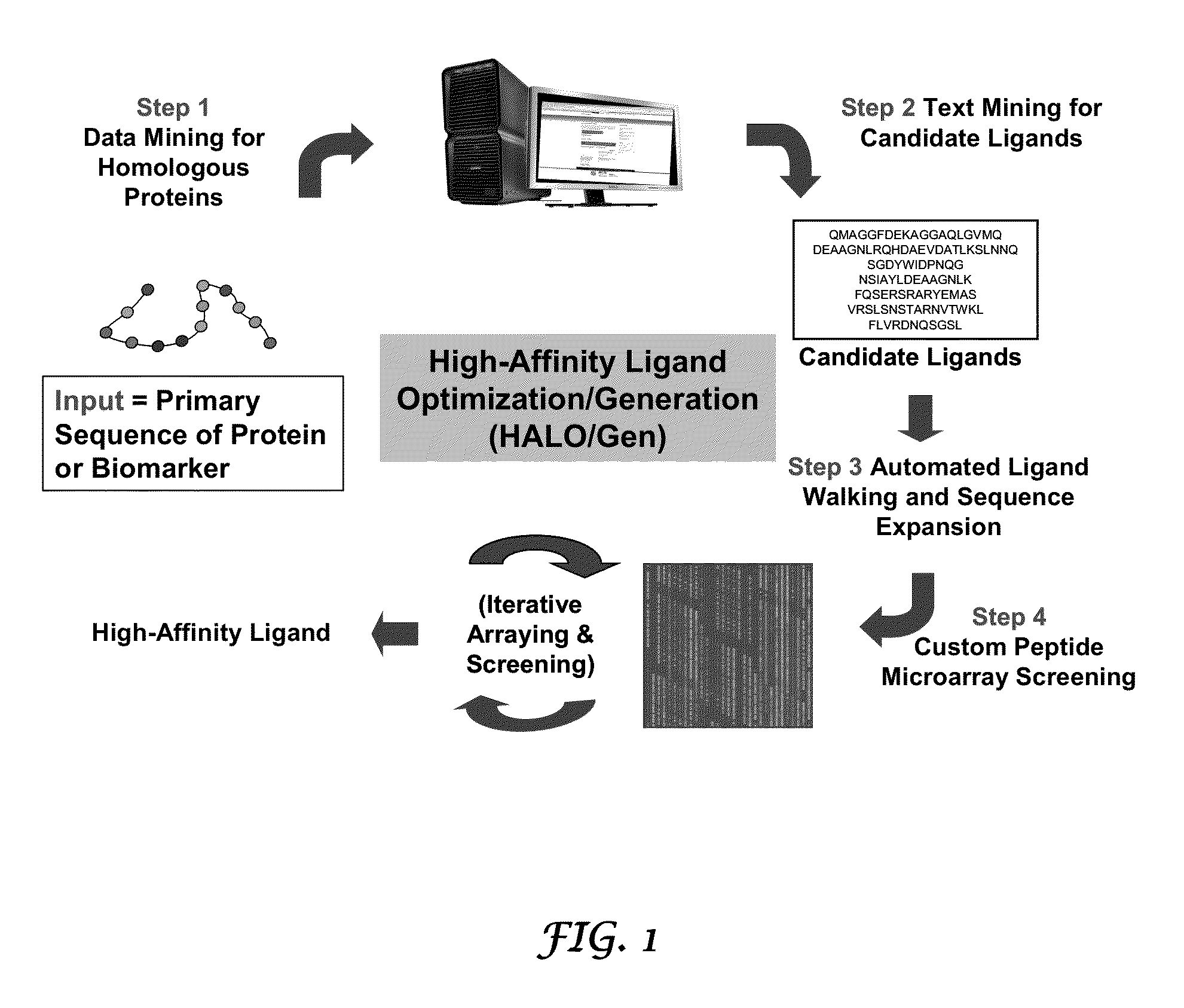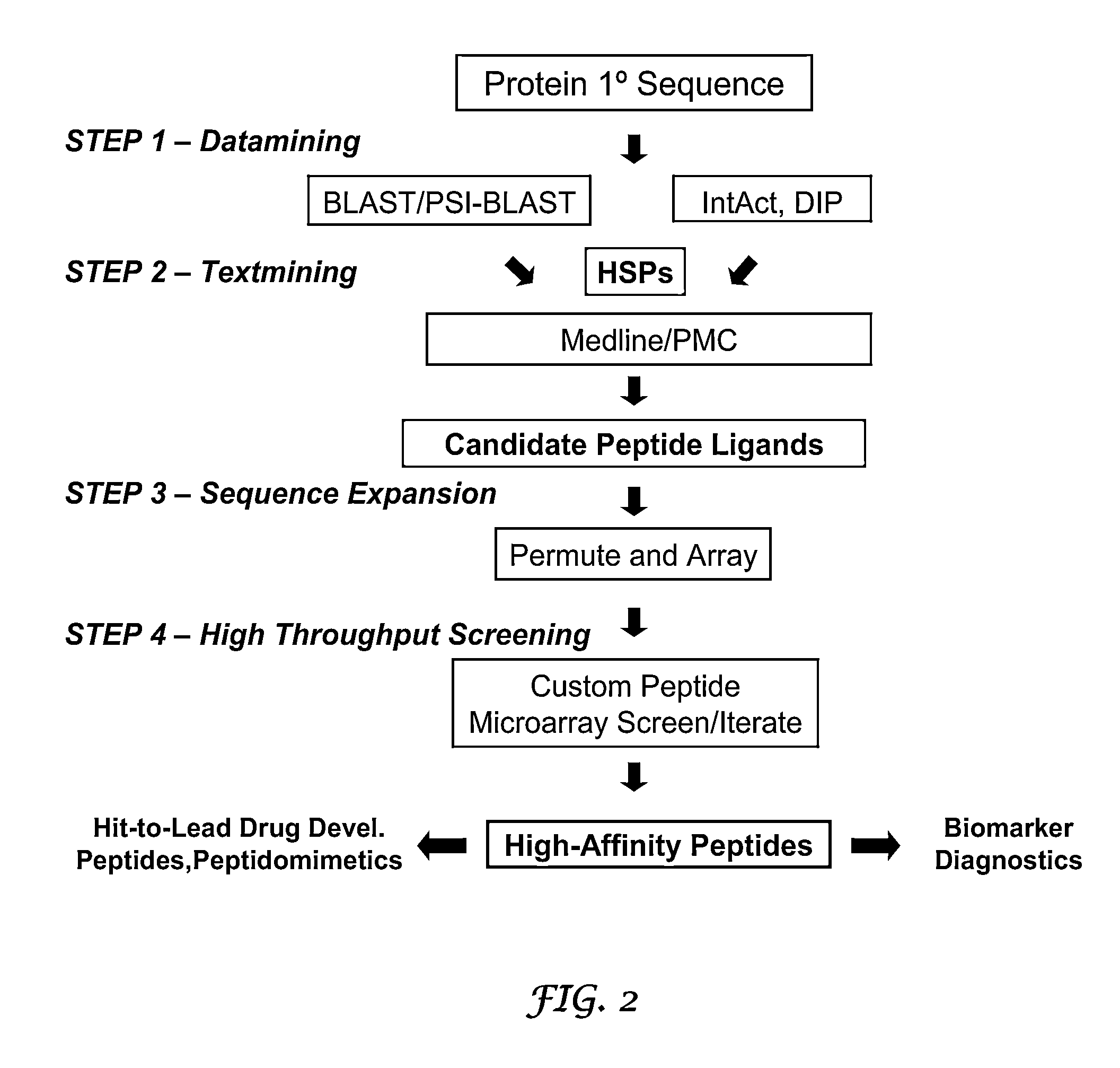Methods for discovering molecules that bind to proteins
a technology of proteins and molecules, applied in the field of methods of identifying peptides and peptidelike molecules, can solve the problems of time and cost required to generate and screen these vast libraries, time and cost, and time-consuming and laborious production and purification
- Summary
- Abstract
- Description
- Claims
- Application Information
AI Technical Summary
Benefits of technology
Problems solved by technology
Method used
Image
Examples
example i
Estrogen-Receptor Related Receptor Gamma
[0084]ESRRG (Estrogen-receptor related receptor gamma, a.k.a., ERRγ, ERR gamma, ERR3) is involved in transcriptional activation of gene expression. ESRRG has been proposed to be a prognostic breast cancer biomarker indicative of clinical outcome and sensitivity to hormonal therapy, and it is a putative therapeutic target in prostate cancer.
[0085]The ERR proteins (comprising ERR α, β, and γ) are ubiquitous, constitutively active, orphan members of the nuclear receptor superfamily that display a wide range of cell-specific gene transcriptional activities which contribute to cell maintenance, apoptosis, and metabolic pathways (Ariazi and Jordan 2006). The ERRs are closely related to the ERs, specifically within their DNA-binding (DBD) and ligand-binding (LBD) domains. Due to their shared DBD homology, ERRs are known to transactivate ERα genes through estrogen response elements (EREs). There is strong evidence suggesting that the control of overla...
example ii
Annexins A1 and A5
[0274]Annexins (ANX) are a family of ubiquitous, Ca2+ dependent, phospholipid binding cellular proteins, common to plants and animals, many of whom are involved in membrane organization, membrane traffic, and regulation of Ca2+ concentrations within cells. Deregulation in annexin expression and activity has been correlated with several human disease characterized as annexinopathies. Certain annexins (e.g. ANX-A1 and ANX-A5) are also proposed to be disease biomarkers, such as for lung exposure to diesel exhaust particles (Lewis, Rao et al. 2007).
[0275]All annexins share a core domain of four similar repeats, approximately 70 amino acids long, but comprise varying amino terminal regions. The vertebrate annexins share only 45-55% homology overall but display ca. 80% homology among the repeat regions, and they reveal conservation of their secondary and tertiary structures. Thus, candidate ligands (to shared regions of homology; i.e., excluding ligands to variable N-ter...
PUM
| Property | Measurement | Unit |
|---|---|---|
| time | aaaaa | aaaaa |
| molecular mass | aaaaa | aaaaa |
| affinity | aaaaa | aaaaa |
Abstract
Description
Claims
Application Information
 Login to View More
Login to View More - R&D
- Intellectual Property
- Life Sciences
- Materials
- Tech Scout
- Unparalleled Data Quality
- Higher Quality Content
- 60% Fewer Hallucinations
Browse by: Latest US Patents, China's latest patents, Technical Efficacy Thesaurus, Application Domain, Technology Topic, Popular Technical Reports.
© 2025 PatSnap. All rights reserved.Legal|Privacy policy|Modern Slavery Act Transparency Statement|Sitemap|About US| Contact US: help@patsnap.com



